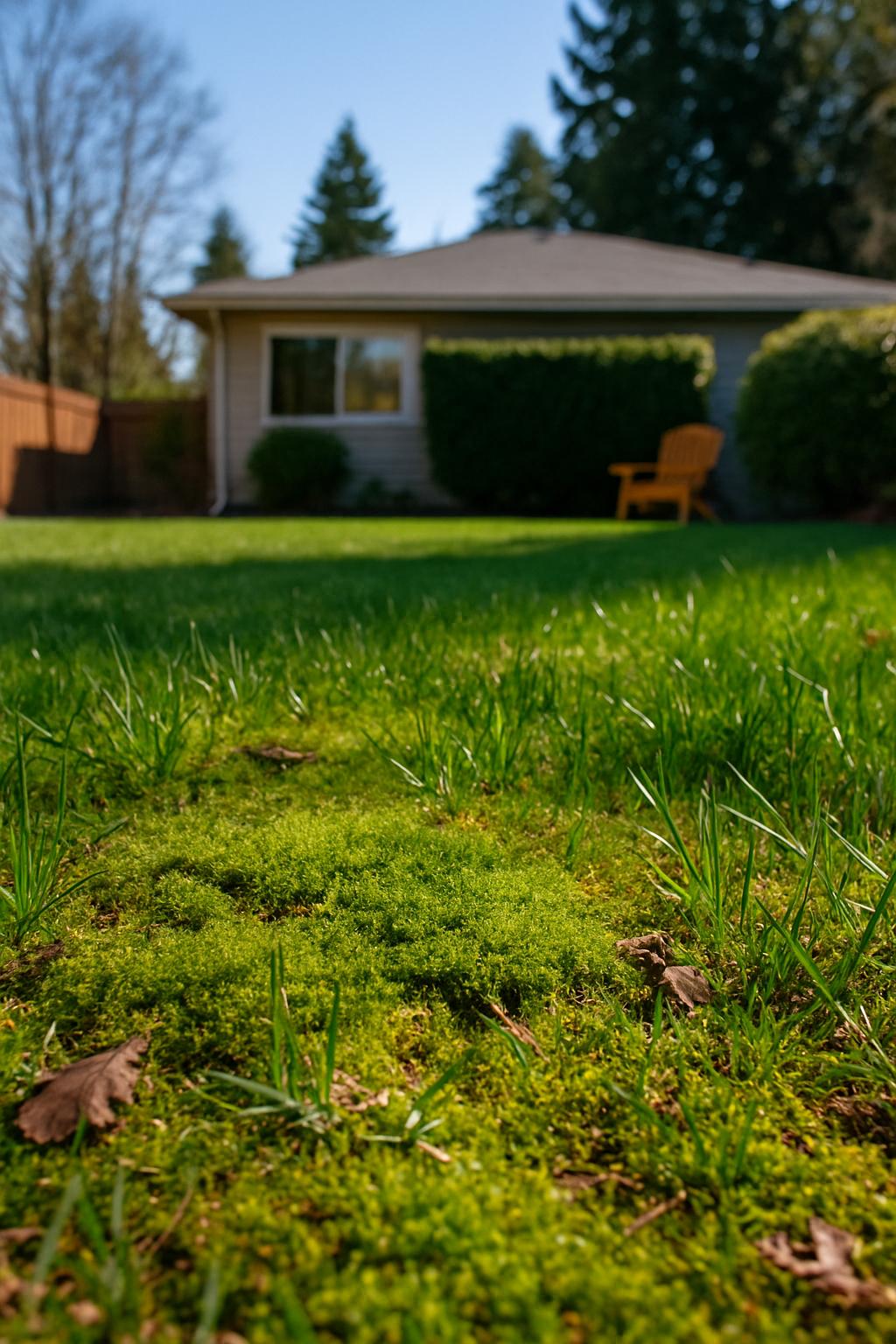
Why Moss Thrives in Bellevue Lawns
Bellevue’s lush, rainy climate creates perfect conditions for moss to flourish. Frequent cloud cover, cool temperatures, and moisture-rich soil allow moss to quickly outcompete grass, especially in shady or poorly drained areas. Moss is not only unsightly, but also a sign of underlying lawn health problems that need to be addressed for a truly resilient yard.
Identify Moss-Prone Areas
Understanding where and why moss appears is key to long-term moss prevention in Bellevue lawns. Moss commonly thrives in:
- Shaded spots under trees, beside fences, or next to buildings
- Low-lying areas where water pools after rain
- Lawns with compacted, acidic, or poorly drained soil
- Thin, patchy grass weakened by stress or winter damage
Before choosing a treatment, walk your yard and take notes. Is there standing water? Are some areas bare or heavily shaded? This information will help you target your moss control efforts effectively.
Correct the Conditions That Cause Moss
The most effective moss prevention in Bellevue lawns involves correcting the root causes:
- Improve Drainage: Aerate compacted soil every spring and fall to help water move through the lawn. Fill low spots with soil and sand, and consider French drains for areas with chronic pooling.
- Increase Sunlight: Prune or thin trees and shrubs to let more sunlight reach the grass. Even an extra hour or two of sun per day can discourage moss growth.
- Adjust Soil pH: Moss prefers acidic soil. Use a soil test kit to check pH levels—Bellevue lawns often benefit from a light application of lime to balance acidity. Aim for a pH between 6.0 and 7.0 for most grass types.
- Raise Your Mower Blade: Set your mower blade higher (2.5–3 inches) to encourage thicker grass and shade out moss.
- Reduce Compaction: Avoid heavy foot traffic on wet lawns, and aerate annually.
When to Use Moss Control Products
Iron-based moss killers (like ferrous sulfate or specialized moss control granules) can be used in spring or fall. Apply products evenly, following label instructions, and rake out dead moss after a few days. Always remember: chemical controls are only a temporary fix if underlying issues remain.
Strengthen Your Lawn to Prevent Moss
A dense, healthy lawn is the best natural defense against moss in Bellevue. To strengthen your turf:
- Overseed with shade-tolerant, cool-season grasses each early spring.
- Fertilize with a slow-release, balanced lawn fertilizer once or twice a year—don’t overdo it, as excessive fertilizer can encourage moss.
- Water deeply but infrequently to promote strong roots (usually once or twice a week, depending on rainfall).
- Rake out leaves and debris to prevent moisture buildup and soil compaction.
Building up your lawn’s health will gradually crowd out moss and other weeds over time.
Maintenance Tips for Moss-Free Lawns
- Keep mower blades sharp and mow when the grass is dry.
- Apply mulch or compost to garden beds—not your lawn—to avoid creating conditions moss loves.
- Monitor for new moss patches after storms or in shaded spots, and act early.
Conclusion
Moss prevention in Bellevue lawns starts with understanding your yard’s conditions, improving sunlight and drainage, correcting soil pH, and maintaining a dense, healthy turf. By combining these strategies with proper seasonal care, you’ll enjoy a greener, moss-free lawn and boost your home’s curb appeal all year long.

